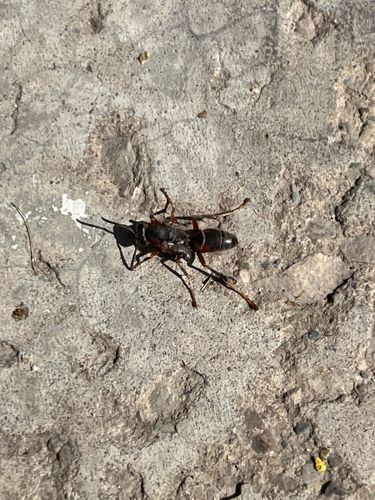Tarantula Hawk Wasp (possibly subspecies)
Scientific Name: Pepsis spp. or Hemipepsis spp.
Order & Family: Hymenoptera, Pompilidae
Size: Typically 2-5 cm (0.8-2 inches) in length, with some species reaching up to 6-7 cm (2.4-2.8 inches). Their legs are often long.

Natural Habitat
Arid and semi-arid regions, grasslands, deserts, woodlands; often found where tarantulas are present.
Diet & Feeding
Adults primarily feed on nectar from flowers and fruit juices. Larvae are carnivorous, feeding on paralyzed tarantulas provided by the female wasp.
Behavior Patterns
Female tarantula hawk wasps are solitary hunters. They actively seek out tarantulas, paralyze them with a powerful sting, and then drag them to a pre-dug burrow or a natural crevice. A single egg is laid on the paralyzed tarantula, which serves as food for the developing wasp larva. Males patrol for females or congregate at nectar sources. They are generally not aggressive towards humans unless provoked, but their sting is among the most painful of all insects.
Risks & Benefits
The primary risk to humans is their extremely painful sting, though it is not typically dangerous unless one has a severe allergic reaction. They are beneficial for controlling tarantula populations in their native habitats and serve as pollinators when feeding on nectar.
Identified on: 9/10/2025